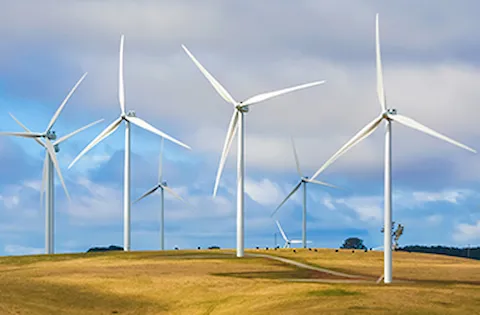Acoustics and offshore wind: new insights from a growing market
In the last 10 years alone, more than 80 GW of onshore wind energy has been added to our energy markets, in over 40 states.
In the last 10 years alone, more than 80 GW of onshore wind energy has been added to our energy markets, in over 40 states. Consideration for external effects such as noise, shadow flicker, microwave beam paths and biological impacts are commonplace.
Following the execution of Executive Order 14008 signed by President Biden on 27 January, 2021, new offshore wind energy lease areas have been unlocked for development potential. An installed offshore wind energy capacity target of 30 GW by 2030 has been ambitiously set to prioritize and accelerate the clean energy transition. In March, the Biden Administration released The American Jobs Plan and announced further offshore wind energy actions, including support for a 10-year extension of clean energy tax credits, clean energy block grants, purchasing 100% clean power for federal buildings, and (most importantly) completing reviews of 16 proposed offshore wind project Construction and Operation Plans by 2025, among other initiatives. In May, California Governor Newsom announced funding of $11 million to match Department of Transportation funding to build an offshore wind port at Humboldt Bay in Northern California.
With the impending growth of offshore wind energy, there are some additional factors that DNV recommends considering regarding environmental planning, particularly in the field of Acoustics. As the world’s largest renewable energy consultancy with a thriving siting and acoustics practice, DNV is well positioned to provide broad comments on this issue. The paragraphs below highlight DNV’s recent offshore wind experience with respect to noise emission.
Regarding construction of an onshore wind energy project, conventional onshore methods use equipment such as but not limited to excavators, haul trucks and cranes. Resulting onshore construction noise impact assessments focus more on the impact construction noise has on nearby residents rather than wildlife. However, when assessing noise for offshore wind energy construction, more consideration is given to the effect of noise from construction equipment on marine life. Our collective understanding of how marine life responds to sound of different frequencies and levels will become more important as offshore wind is developed in the United States. Sounds and vibrations can affect various species groups including marine mammals, sea turtles, fish, and invertebrates, but significant information gaps remain regarding how individual species may be impacted and at what sound thresholds. For instance, in addition to potential direct, physical damage that can occur due to intense noise, critical survival and reproduction factors such as communication, ability to find mates, and the presence of competitors, predators, and prey may all be impacted by sound. Sound propagation underwater is dependent on factors that are different from airborne acoustic propagation such as water depth, salinity, a much faster speed of sound (due to the higher density medium) and a differing decibel scale reference.
Operational noise from wind turbines follows similar concepts in terms of the noise propagation when comparing onshore versus offshore wind, however there are a few additional points to consider with offshore wind. Onshore wind energy projects generally follow well known noise propagation methods to calculate the sound level from project equipment to nearby properties. The propagation distance between wind turbines and nearby affected residences could be as small as 500 feet. In contrast, offshore wind energy projects are usually located many miles from shore, far enough that the impact of operational noise to people onshore is not a typical concern. The effect of operational noise on marine life is the primary focus when assessing offshore wind projects. DNV sees value in future research to better understand how factors like changes in particle motion, sound pressure, and substrate vibrations associated with turbine operations can physically or behaviorally impact marine species.
Although there are varying requirements when analyzing noise for onshore and offshore wind projects, assessments need to be completed by experts actively involved in the industry. Construction and Operation Plans that consider these effects, as well as detailed airborne and underwater acoustic studies, including appropriate mitigation measures, are all important aspects in minimizing our impact on the acoustic landscape and its human and non-human inhabitants. There is an exciting future ahead for offshore wind energy and, as part of a company that is on the leading edge of this transition, our siting and acoustics experts are looking forward to assisting the development and furthering of offshore wind projects in the United States.
8/9/2021 5:00:00 AM




